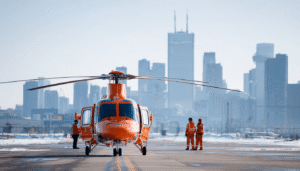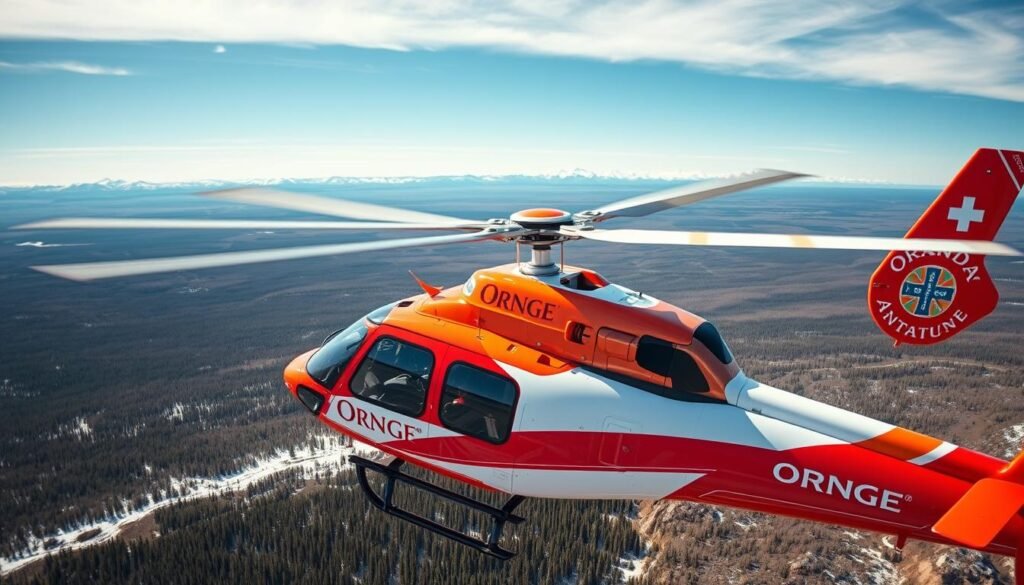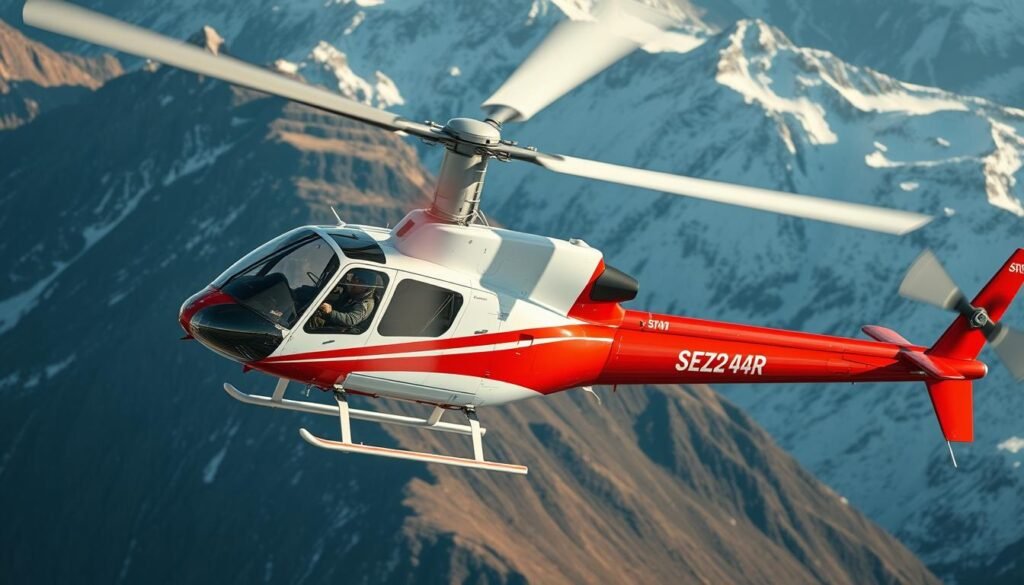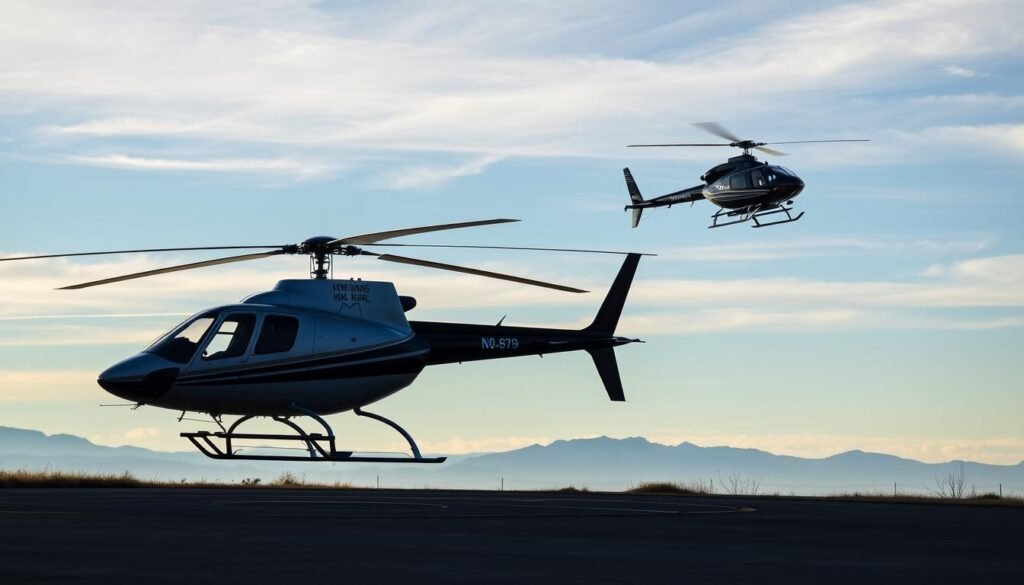This brief guide frames compensation for senior EMS flight leadership in Ontario, anchoring expectations to the Chief Pilot, Rotor Wing posting. It highlights a leadership pay range of $144,664–$173,297.87 and the total rewards that accompany it.
The role combines oversight of enroute operations, pilot standards, training, and safety in a regulated air-medical environment. The position is based in Mississauga with a hybrid work mode requiring two in-office days per week and a 37.5-hour workweek.
Required credentials include an ATPL(H) with Group IV instrument rating, multi-engine rotor-wing PIC time, NVG proficiency, and Transport Canada approvals. Benefits listed with the posting emphasize comprehensive health, dental, and vision plans, a defined-benefit pension, EFAP access, paid personal days, and four weeks of vacation accrual.
Key Takeaways
- Chief Pilot pay of $144,664–$173,297.87 sets an upper market benchmark.
- Hybrid leadership schedule supports oversight while operations run across bases.
- Advanced certifications and NVG experience drive higher compensation.
- Generous total rewards complement base pay for long-term retention.
- Posting dates (Apr 8–Apr 22, 2025) reflect current, source-derived data.
For a full breakdown of helicopter pilot roles across sectors, see our Helicopter Pilot Pay Guide.
Ornge Helicopter Pilot Salary: Current Pay Context And What Influences It
Executive-level flight roles command compensation that reflects more than flight hours—they’re tied to safety oversight, multi-base coordination, and the authority to run approved training programs. The Chief Pilot role sets a clear benchmark for EMS leadership, sitting at the upper tier of rotor wing pay. For a broader look at frontline EMS pilot compensation, see EMS & Medevac Helicopter Pilot Salaries: What Life-Saving Roles Pay.
Leadership Benchmark: Chief Pilot, Rotor Wing Salary Range ($144,664-$173,297.87)
This salary band reflects more than just seniority—it’s a market-aligned benchmark for pilots who manage teams, oversee safety and compliance, and often step in for the Director of Flight Operations. Compensation at this level accounts for leadership scope, operational oversight, and the ability to navigate both administrative and flight responsibilities. For a broader view of top-tier aviation roles, see Highest Paying Helicopter Pilot Jobs.
Total Rewards At Ornge: Health, Dental, Vision, Pension, And Paid Time Off
Benefits extend total compensation beyond base pay. Employees receive comprehensive health, dental, and vision plans, a 24/7 EFAP, automatic enrollment in a premium defined-benefit pension, three paid personal days (prorated Year 1), and four weeks of vacation to start.
Duties That Drive Compensation: Flight Standards, Pilot Training, And Safety Oversight
Compensation rises with duties such as administering flight standards, approving training supplier RFPs, handling accident reporting, and ensuring CARs-compliant scheduling. Supervising crews and auditing multiple bases also push pay toward the top of the band.
Experience, Certifications, And NVG Proficiency As Pay Factors
Higher pay favors candidates with an ATPL(H) and Group IV instrument rating, verified multi-engine rotor-wing PIC time, NVG experience, and Transport Canada approvals. The combination of technical credentials and leadership chops explains the premium for this role.
Training And Career Pathways For EMS Rotor Wing Pilots
A clear roadmap of technical ratings and staged experience helps candidates advance from line roles to operational leadership. As pilots build time and earn advanced certifications, they move from entry-level pay bands into more specialized roles.

Pilot Training, Instrument Ratings, And Airline Transport Pilot License (Helicopter)
Candidates should pursue a structured training pathway that culminates in an ATPL(H) with a Group IV instrument rating—essential for IFR operations in EMS environments. Validated multi-engine rotor-wing PIC time and NVG proficiency round out the operational profile, while Transport Canada approvals ensure regulatory readiness for higher-responsibility roles.
Early focus on instrument procedures, SOP discipline, and risk management builds reliable crews for patient transport missions. For those entering the field, understanding how training level and certification affect compensation is key—see Starting Salary for Helicopter Pilots: Entry-Level Pay Across Roles for a breakdown by role and employer type.
Progression From Line Pilot To Leadership In Flight Operations
Progression moves from line roles into training and check duties, then into supervisory work.
- Support approved training programs and lead check events to gain credibility.
- Supervise crews, audit bases, and join safety investigations to broaden oversight skills.
- Develop coaching and performance measurement to transition into management.
For hands-on guidance and entry steps, review the how to become a helicopter pilot guide and explore relevant openings on the career page.
Working In Canadian Air Medical Transport: What U.S. Candidates Should Know
U.S. applicants should plan for Canadian operational norms, licensing steps, and a hybrid leadership schedule when evaluating air-medical roles.

Cross-Border Considerations, Work Mode, And Source-Verified Updates
Location and schedule: Leadership roles require two days in-office per week at 5310 Explorer Drive, Mississauga, with travel to bases as needed. The standard expectation is a 37.5-hour workweek that may demand flexible availability for missions.
Regulatory pathway: Transport Canada approvals and familiarity with Canadian Aviation Regulations are essential. U.S. pilots should review equivalency steps and plan for certification processes before applying. For a broader comparison of structured aviation roles across borders, see Army vs. Civilian Helicopter Pilot Salaries: What You’ll Earn in Each Path.
Mentorship and outreach: Leadership engages with flight schools to support talent pipelines and community engagement.
Inclusion and access: The employer follows AODA accessibility standards and encourages applicants from underrepresented groups.
Benefits and verification: Comprehensive benefits and a defined-benefit pension enhance cross-border total rewards. Users may submit source updates and will receive email confirmation when changes are verified and published.
Conclusion
Understanding the mix of training, operational scope, and benefits helps candidates judge leadership fit.
The Chief role benchmark of $144,664.00–$173,297.87 and comprehensive total rewards—health, dental, vision, EFAP, and a premium defined-benefit pension—make the offer compelling for senior applicants.
Key duties that drive compensation include administering pilot standards, overseeing approved training programs, and ensuring CARs-compliant scheduling across bases. NVG proficiency, ATPL(H) with Group IV instrument rating, and multi-engine rotor-wing PIC time underpin eligibility for higher pay.
Work mode is hybrid, with two in-office days weekly at Mississauga HQ and travel to regional bases. Aligning one’s training, operational experience, and mentorship skills positions candidates to lead teams of pilots effectively.
Whether you’re flying in remote provinces, supporting trauma teams, or planning a cross-border career shift, understanding how employer type, location, and career stage shape pay is key. For a full salary roadmap, revisit our Helicopter Pilot Pay Guide.



